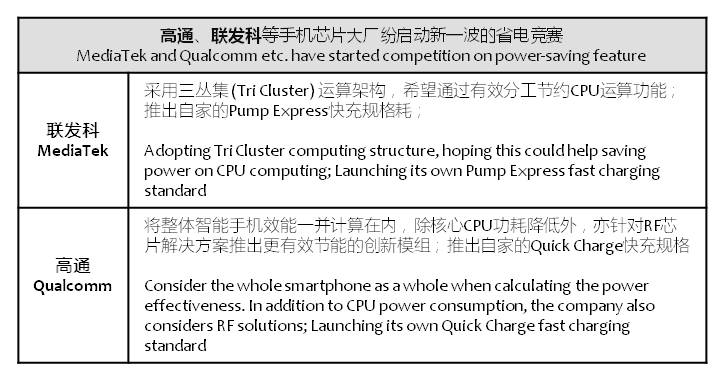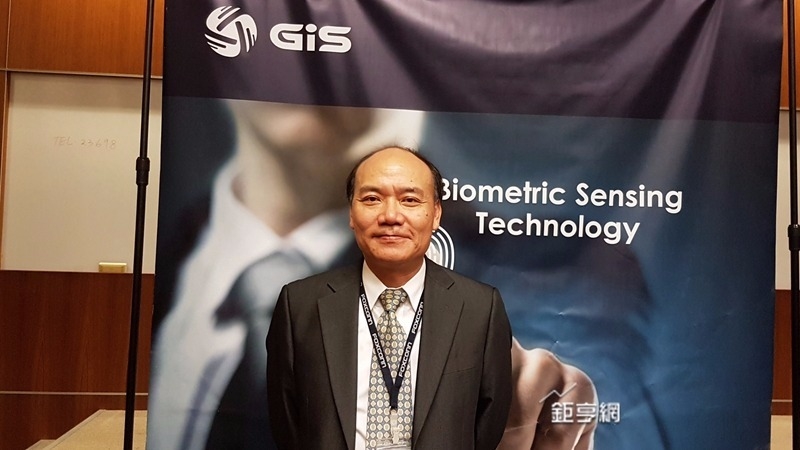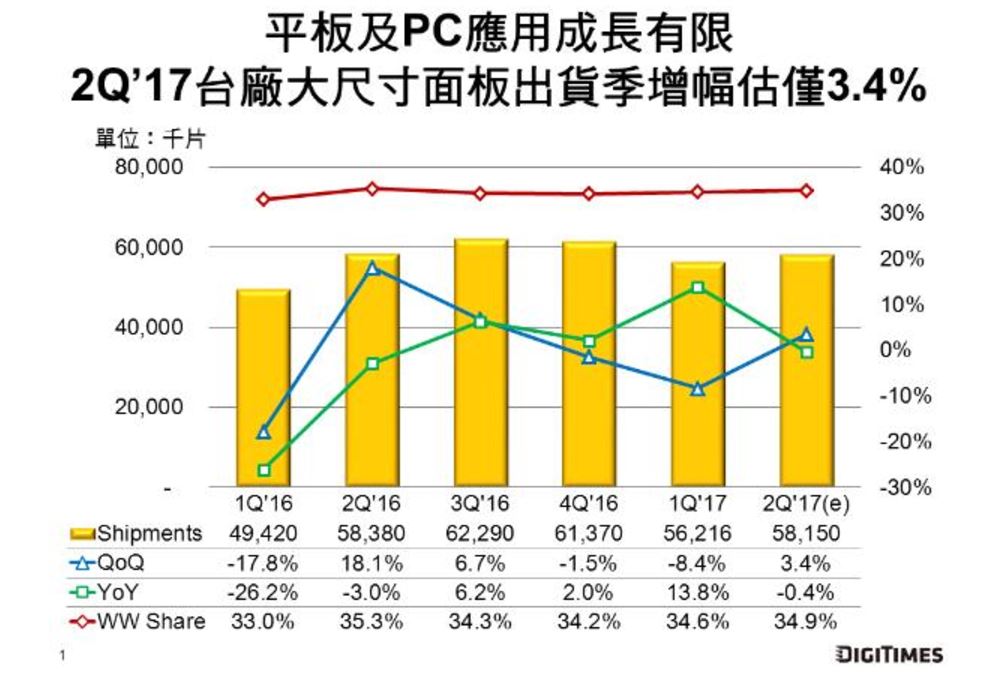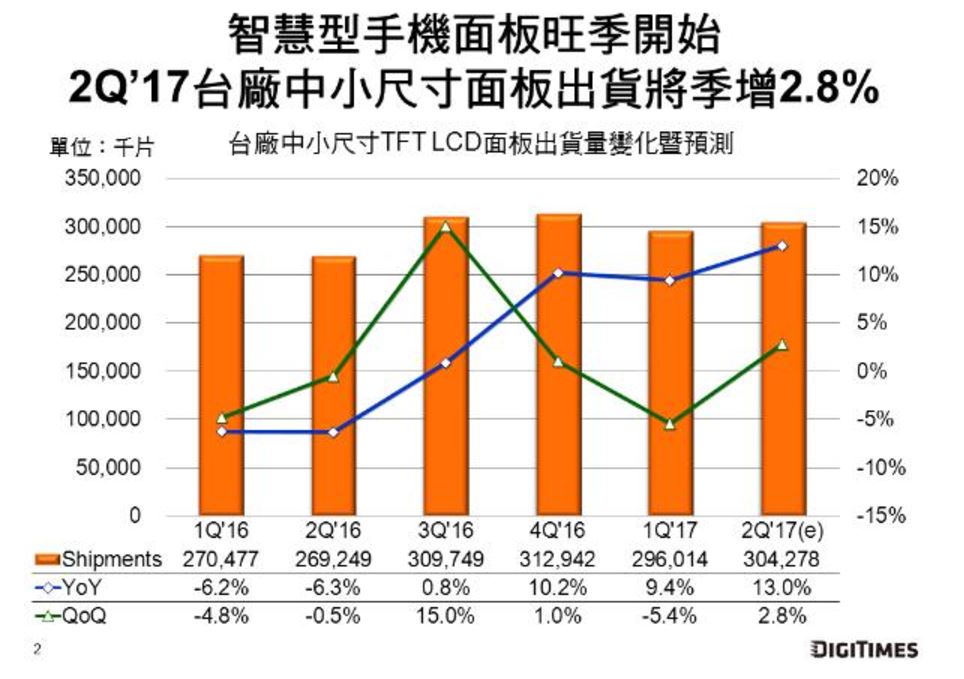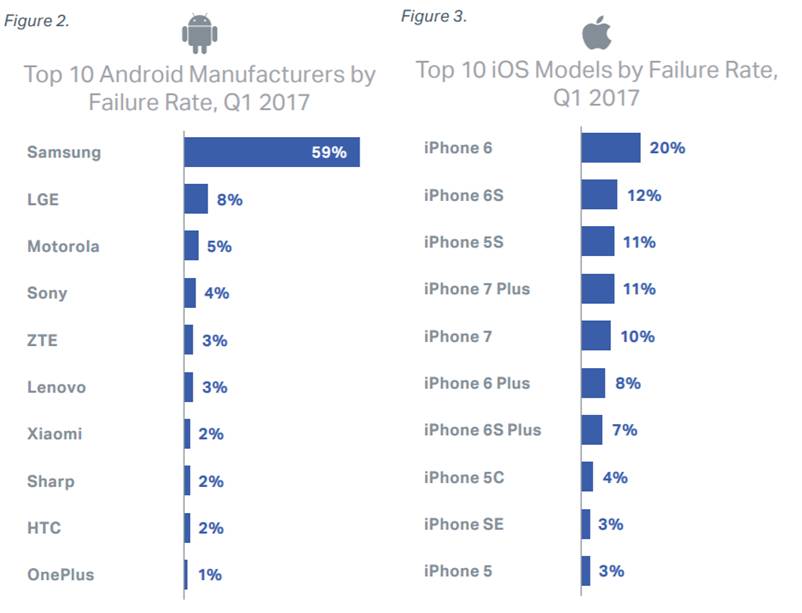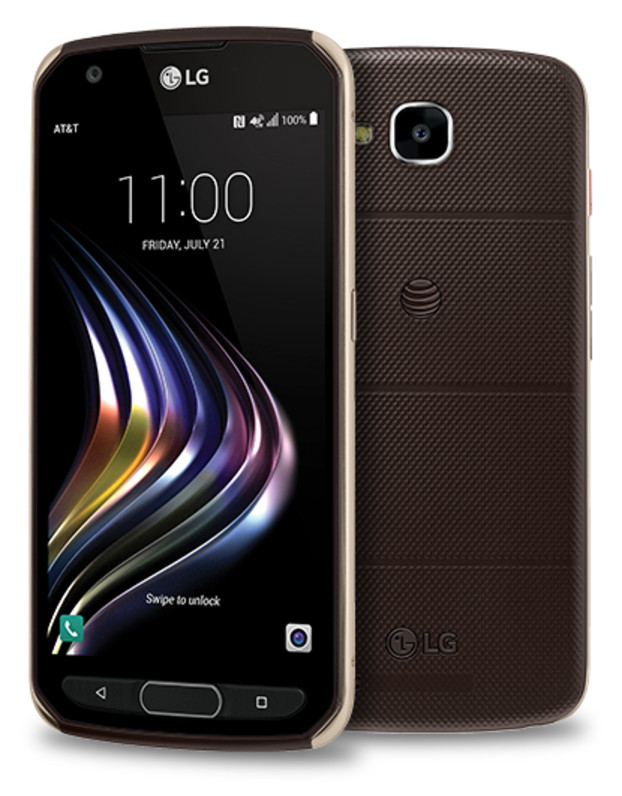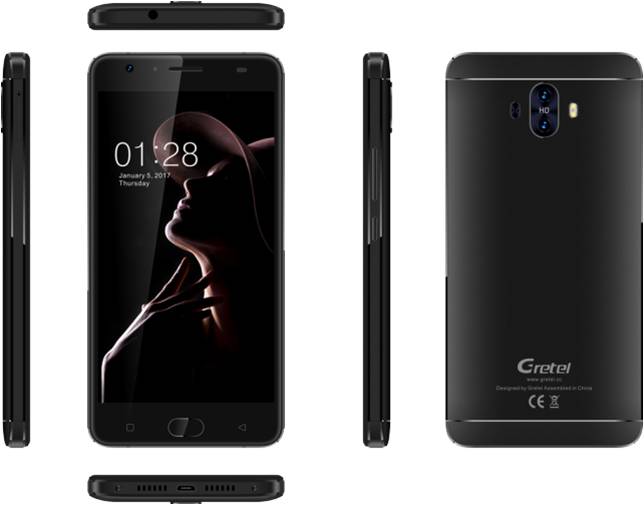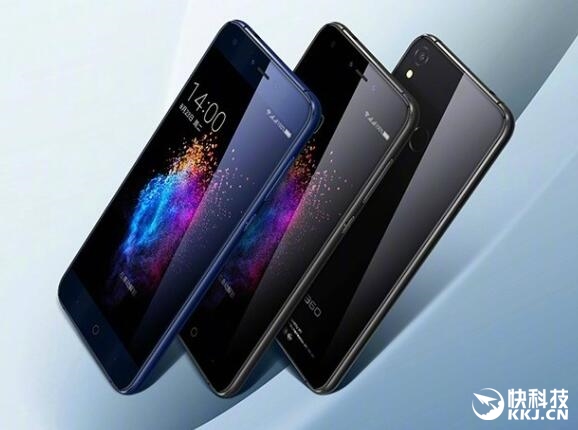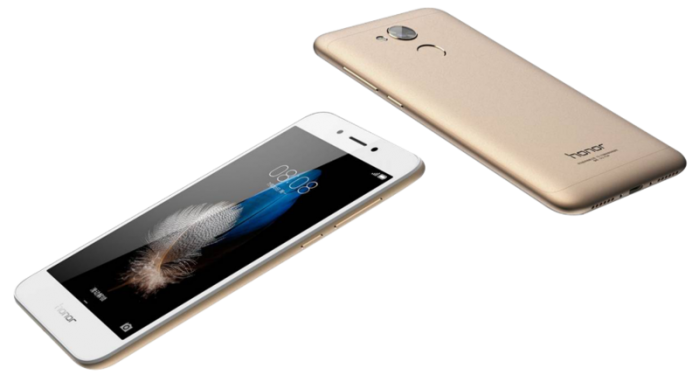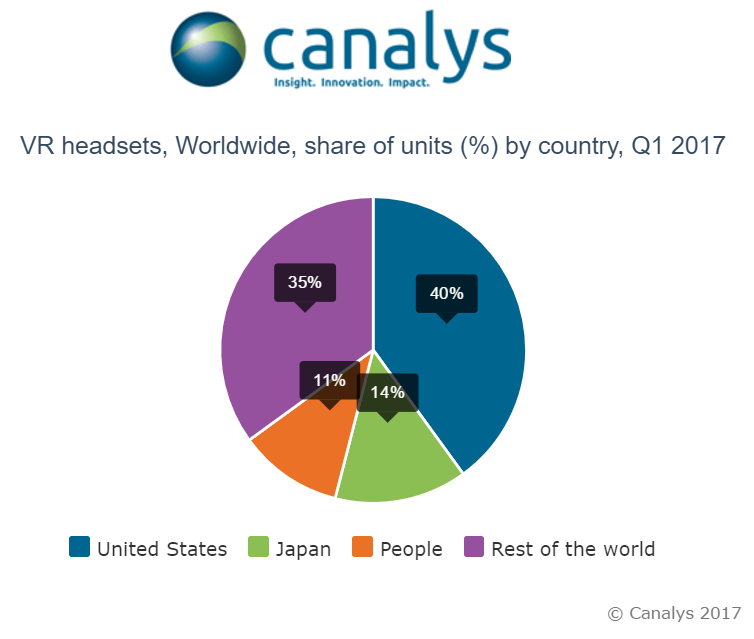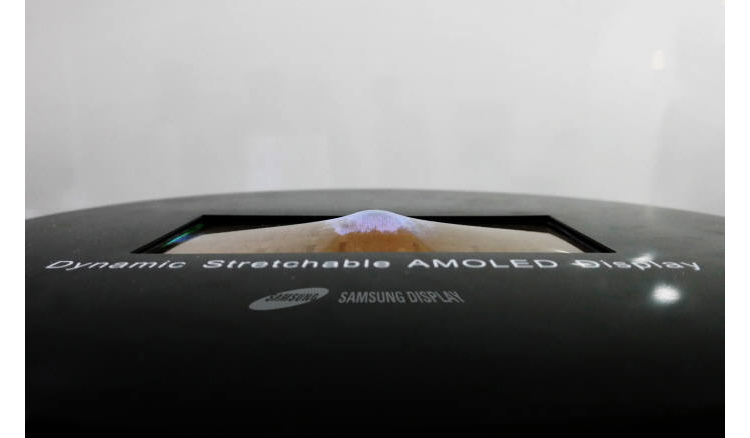
05-23: Got cold bugs for 2 days, sorry! Samsung Display is showing off a new 9.1” OLED display panel that can stretch in any direction; Sharp and Hon Hai acquiring eLux; etc.
Chipsets
Huawei HiSilicon Kirin chipsets shipment exceeds 100M units in 5 years. (Laoyaoba, EE World, iFeng)
Battery technology lacks of innovation and breakthrough, in addition to the display size is getting bigger to 5.5”~6.5”, consumers want their smartphone products to be more power effective. Qualcomm and MediaTek have already initiated another competition on the power saving technology. (Laoyaoba, EE World, Sohu)
Touch Display
Samsung Display is showing off a new 9.1” OLED display panel that can stretch in any direction. Samsung says it can be stretched as much as 12mm when pressed. (Sammy Hub, Liliputing, Korea Herald)
General Interface Solution (GIS-KY) president Xian Ying Zhou indicates that to provide out-cell solution for AMOLED display, the company is collaborating with Sharp and Innolux to develop AMOLED related products, expecting to invest in one production line with monthly 600K production, hoping to enter mass production in 2018. (Laoyaoba, LTN, CNYES)
Sharp will team with CyberNet Venture Capital, panel maker Innolux and Advanced Optoelectronic Technology to buy Delaware-based eLux in Oct 2017. All of the acquirers are owned by or affiliated with Taiwanese contract manufacturer Hon Hai, also known as Foxconn. (Laoyaoba, Patently Apple, Asia Nikkei)
LG Display (LGD) Display has decided to invest KRW10T (USD8.9B) in its P production line in Paju, mainly on OLED facilities. The company will build the line in a hybrid form that can produce large and small and mid-size panels at the same time, but small and mid-size plastic OLED (POLED), which has become the trend in the global smartphone market, for mobile devices will account for more than 70% of the total production. (Business Korea, Laoyaoba)
Taiwan-based TFT-LCD panel makers will together ship 58.15M large-size (9” and above) panels during 2Q17, increasing 3.4% on quarter but decreasing 0.4% on year and taking up 34.9% of global total, according to Digitimes Research. The four makers (Innolux, AUO, HannStar and CPT) will ship 232.37M large-size panels in 2017, growing 0.4% on year. (Digitimes, press, Digitimes)
Taiwan-based TFT-LCD panel makers will together ship 304.278M small- to medium-size panels during 2Q17, an increase of 2.8% on quarter and 13.0% on year, according to Digitimes Research. Of the shipments, 84.5% will be a-Si TFT-LCD panels and 15.5% LTPS (low-temperature poly-Si) units, Digitimes Research indicated. (Digitimes, press, Digitimes)
Smartphones
Global shipments of smartphones supporting Google Daydream platform will reach over 10M units in 2017, according to Clay Bavor, vice president of virtual and augmented reality at Google. Additionally, over 150 VR applications supporting the Daydream have come online and over 10,000 360º VR videos have posted on Youtube, Bavor revealed. (Digitimes, press, Laoyaoba)
Jia Yueting, chairman and CEO of China-based LeEco, has stepped down as CEO of the company but will retain his position as chairman. Continuing as chairman, Jia will focus on corporate governance, strategic planning, core product development, and improving efficiency of corporate decision-making. (Digitimes, press, Sohu, JRJ)
Using the failure rate as a yardstick, Blancco Technology Group survey found that the overall failure rate of Android devices stood at 50% for 1Q17, while iOS’ failure rate for the same period stood at 68%. Both rates had increased in comparison with the previous quarter — Android stood at 47% in the previous quarter, while iOS stood 62% in 4Q16. (Laoyaoba, MSN, Blancco, report)
With elderly using WeChat or social medial, elderly consumers’ requirements are not limited on big fonts, power saving. More elderly consumers are like younger consumers, they like voice chatting, video communication, and they want big memory smartphone. However, the market generally still fills with the so-called elderly phones that do not adapt to their emerging needs. (CN Beta, BJD, China.com)
Apple and Nokia said they have reached settlement in a five-month legal dispute over patent licensing practices. Apple will pay Nokia patent royalties over the term of the agreement, starting with an up-front cash payment that should be recognized by 2Q17. Details of the renewed collaboration are being kept confidential. (Apple Insider, Apple, Laoyaoba)
LeEco is allegedly preparing to lay off 80% of its US staff. Following the procedures, LeEco’s US workforce will supposedly number 60 people, down from over 500. (Phone Arena, CNBC, Android Central, Tencent, TechWeb)
LG X Venture is launched – 5.2” FHD in-cell touch display, Qualcomm Snapdragon 435 processor, 16MP + 5MP cameras, 2GB RAM, 32GB storage, Android 7.0, IP68 certified, 4100mAh battery. (Android Central, Android Headlines, The Verge, Android Police)
Gretel GT6000 is announced with dual-camera – 5.5” HD Sharp LCD 2.5D curved display, MediaTek MT6737 processor, dual rear 13MP-1.3MP + front 5MP cameras, 2GB RAM, 16GB storage, Android 7.0, TouchID fingerprint, 6000mAh battery. (GizChina)
360 N5S is launched – 5.5” FHD display, Qualcomm Snapdragon 653 processor, 13MP PDAF + front dual 13MP PDAF-depth sensor, 6GB RAM, 64GB storage, Android 7.1, 3730mAh battery, CNY1699. (My Drivers)
Meizu M5c is announced – 5” HD display, MediaTek MT6753 processor, 8MP + 5MP cameras, 2GB RAM, 16GB storage, 3000mAh battery. (Android Headlines, Gizmo China, GSM Arena, My Drivers)
Huawei Honor 6A is launched – 5” HD display, Qualcomm Snapdragon 435 processor, 13MP + 5MP cameras, 2 / 3GB RAM, 16 / 32GB eMMC, Android 7.0, fingerprint sensor, 3020mAh battery. (Gizmo China, CN Beta, My Drivers)
Wearables
The US VR market formed 40% of the global market in 1Q17, keeping its place as the largest market for VR in terms of volumes shipped worldwide. Sony PlayStation VR dominated the US market with just over 60% share. It capitalized on its installed base of gaming devices, as well as its lower-cost headsets. Demand in the Japanese VR market meant that a total of 81,000 VR headsets were shipped in Japan. This was largely contributed by Sony, which conquered its home market with 90% market share. (CN Beta, Canalys, press)
